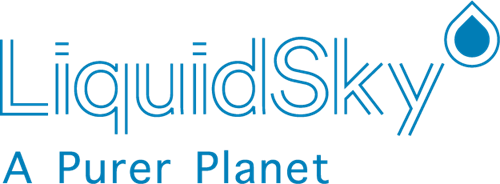
Introduction
In a world increasingly focused on environmental sustainability and responsible industrial practices, achieving Zero Liquid Discharge (ZLD) has become a critical goal for many industries. ZLD is not only a regulatory requirement in some regions but also a symbol of commitment to minimizing environmental impact. Vacuum evaporators have emerged as a powerful and innovative technology to help industries attain ZLD while effectively managing their wastewater. In this blog, we will take a closer look at vacuum evaporators and their pivotal role in realizing ZLD goals, eliminating liquid waste, and ensuring compliance with stringent regulations.
Understanding Zero Liquid Discharge (ZLD)
Zero Liquid Discharge (ZLD) is a water treatment process that aims to recover and reuse all wastewater generated in industrial processes, leaving zero liquid waste for discharge. This approach represents a paradigm shift from traditional wastewater management practices, which often involve the release of treated wastewater into the environment.
The Significance of ZLD
a) Environmental Responsibility: ZLD reflects a commitment to environmental responsibility by preventing the release of pollutants into water bodies, safeguarding aquatic ecosystems, and reducing the risk of contamination.
b) Regulatory Compliance: In many regions, regulatory authorities have mandated ZLD for industries, particularly those in water-stressed areas. Compliance with ZLD regulations is essential to avoid penalties and legal repercussions.
c) Resource Conservation: ZLD enables the recovery of valuable resources from wastewater, including water itself, chemicals, and minerals. This promotes resource conservation and sustainability.
Working Principle of a Vacuum Evaporator

a) Feeding:Wastewater is introduced into the tube side via a vacuum system.
b) Heating: Within the tube, wastewater is heated under a vacuum to approximately 450 mbar, causing it to reach a boiling point of 85°C.
c) Evaporation:Once boiling at 85°C for a few minutes, the water begins to evaporate. These vapours are then compressed by a vacuum pump, leading to a temperature increase up to 120°C. These high-temperature vapours are subsequently directed to tubes on the outside of the system, where they come into contact with cooler wastewater (initially at 85°C). As a result of this temperature difference (ΔT), the vapour loses energy, condenses, and forms condensate with a temperature of around 100°C. This condensate is passed through a pre-heat exchanger to further heat the incoming wastewater and recover additional energy.
d) Discharge:: As the system continues to evaporate wastewater, it eventually reaches a saturation point with higher Total Dissolved Solids (TDS), leading to a drop in evaporation pressure. Once the system reaches the specified vacuum set point, the evaporative process halts, and the system prepares for the discharge cycle, transferring the concentrate to a designated tank.
e) CIP (Clean in Place):: As the system continues to evaporate wastewater, it eventually reaches a saturation point with higher Total Dissolved Solids (TDS), leading to a drop in evaporation pressure. Once the system reaches the specified vacuum set point, the evaporative process halts, and the system prepares for the discharge cycle, transferring the concentrate to a designated tank.
Vacuum Evaporators: The Key to Achieving ZLD
Vacuum evaporators have emerged as a cornerstone technology in the journey toward ZLD. These innovative systems operate on the principle of vaporizing water from wastewater while leaving behind concentrated pollutants. Vacuum evaporators create reduced pressure conditions to lower the boiling point of water, resulting in significant energy savings compared to conventional methods. Here’s why they are crucial in achieving ZLD:
a) Efficient Water Recovery:Vacuum evaporators can recover up to 95% of the water from wastewater, producing high- quality distillate suitable for reuse. This not only minimizes liquid waste but also reduces water consumption and costs.
b) Concentrated Pollutants:The concentrated pollutants left behind after evaporation can often be managed more effectively and disposed of in an environmentally responsible manner, reducing the environmental impact of industrial processes
c) Compliance with Regulations:Vacuum evaporators assist industries in complying with ZLD regulations by eliminating liquid waste discharges and ensuring that only high-quality distillate is released into the environment.
d) Cost-Effective: While the initial investment in vacuum evaporators may be substantial, the long-term cost savings are significant. Lower energy consumption, reduced disposal costs, and potential revenue generation from recovered materials make them a financially viable choice.
e) Versatility:Vacuum evaporators can handle a wide range of wastewater types, making them suitable for various industries, including metal finishing, electronic chip manufacturing, aerospace, chemicals, food and beverage, and pharmaceuticals.
Conclusion
Zero Liquid Discharge (ZLD) is not just a regulatory requirement; it represents a commitment to environmental stewardship and sustainable industrial practices. Vacuum evaporators have emerged as the linchpin in achieving ZLD goals, offering efficient water recovery, concentration of pollutants, compliance with regulations, and cost-effectiveness. As industries continue to strive for environmental responsibility and resource conservation, vacuum evaporators stand as a testament to innovation in wastewater management. They play a pivotal role in eliminating liquid waste, ensuring regulatory compliance, and promoting a more sustainable approach to industrial processes. In the journey toward ZLD, vacuum evaporators are the engine that drives progress, offering a cleaner, greener future for industries around the world.
